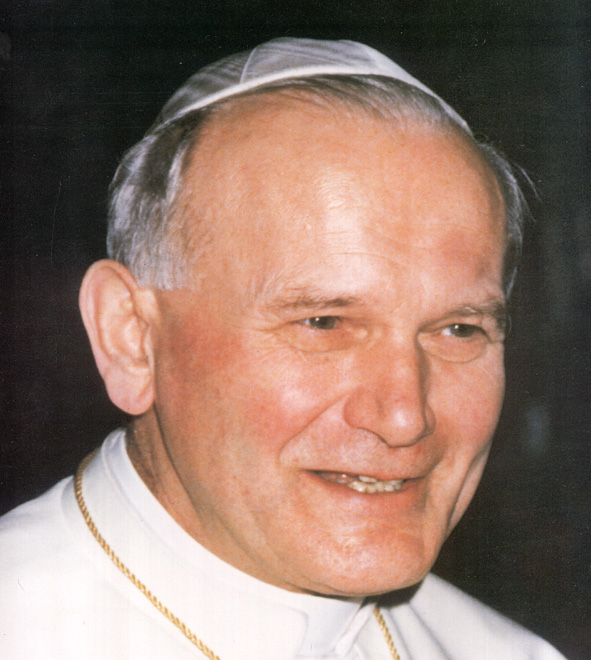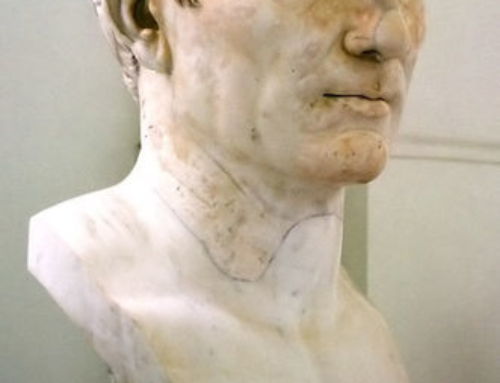The news that a million Poles encircled their country with prayer in a public witness was a powerful reminder of the struggles that face Western countries with a Christian heritage.
They were commemorating the Battle of Lepanto–a great victory of minority Christian forces against an invading Islamic army. In doing so they were also standing up against the invasion by stealth of millions of Islamic immigrants.
However, while remembering the victory won through the power of prayer at Lepanto, we should also remember the role the Poles played in the victory over the forces of darkness twice before–at the Battle of Vienna and in the fight against communism.
Two years ago I led a parish pilgrimage to Poland and learned more about Polish history, and the benefit of learning about history is always to muse on how the events of history might apply today. Seeing how problems were resolved in the past can offer clues to the solutions which seem intractable in our day.
A recent biography by Miltiades Varvounis reminds us of one of the great heroes of European history, the Polish king Jan Sobieski.
Jan Sobieski gained glory and fame in his thirties through his exceptional military skills. He was acknowledged as the greatest warrior-king of his time. His patriotism, his strong faith and hope in God, his military reputation, his taste for arts and letters, and his talents—all these were legendary in his lifetime.
Sobieski is the unexpected warrior who saved Europe from the soldiers of Islam at the Battle of Vienna (1683)— a battle which was the inspiration for J.R.R. Tolkien’s epic cavalry charge of the Rohirrim that lifted the Siege of Minas Tirith in the Lord of the Rings trilogy.
For those who are unaware, the Battle of Vienna is on par with the Battle of Lepanto in Christian Europe’s centuries-long struggle to stem the advance of militant Islam.
The battle took place on September 11-12, 1683. (Note the 9-11 date.) From July, the forces of the Ottoman Empire, led by Kara Mustafa, had besieged the city of Vienna. Vienna was the crucial battleground because its geographical location meant it was the gateway to the rest of Europe.
By September, the Viennese defenders were famished and exhausted. German and Bavarian armies had marched to their aid, but the huge and well-organized Ottoman forces continued their siege, digging trenches to hide from the defenders on the city walls, and digging tunnels to blow up the fortifications from below. King Jan Sobieski, in the meantime, was riding south from Poland with his well-drilled cavalry, the Flying Hussars.
Upon reaching Vienna, with the Ottoman army close to breaching the walls, Sobieski ordered a full attack on September 12th. In the early morning of that day, the united army of about 65,000–76,000 men (including 27,000 Poles) attacked a Turkish force of about 80,000–115,000 men.
At about 17:00, after observing the infantry battle from the Kahlenberg hilltop, Sobieski led his cavalry in a massive charge down the hillside. The faltering Ottoman battle line was broken and the Ottoman forces scattered in disarray. About a half-hour later, Sobieski entered the deserted tent of Kara Mustafa and the Battle of Vienna ended.
Historians believe it was the largest cavalry charge in history. It not only swept away the besieging Ottoman armies, but also prepared the way for a mopping-up operation that eviscerated the Ottoman advance on Europe for ages to come.
 Jan Sobieski’s victory over the forces of darkness reminded me of Pope St John Paul’s part in the downfall of communism. Faced with equally overwhelming odds, John Paul’s courage and charisma combined with prayer gave him much power. On June 2, 1979 the Polish celebrated Mass in Warsaw’s Victory Square in the presence of millions of his fellow poles. His inspiring homily and continued support of the Solidarity movement spurred his countrymen to stand firm. Their resistance became the first crack in the seemingly impregnable fortress of the Soviet Empire.
Jan Sobieski’s victory over the forces of darkness reminded me of Pope St John Paul’s part in the downfall of communism. Faced with equally overwhelming odds, John Paul’s courage and charisma combined with prayer gave him much power. On June 2, 1979 the Polish celebrated Mass in Warsaw’s Victory Square in the presence of millions of his fellow poles. His inspiring homily and continued support of the Solidarity movement spurred his countrymen to stand firm. Their resistance became the first crack in the seemingly impregnable fortress of the Soviet Empire.
A true hero—whether he is Jan Sobieski or John Paul II—is not simply a political or military figure. A spiritual hero radiates truth, beauty and goodness—against which the powers of darkness cannot stand. Jan Sobieski, in his age, resorted to the use of military might. In his day John Paul galvanized the Polish people through an appeal to their fervent Catholic faith which was stronger than communist ideology. Both men, in their way and in their day faced down a colossal evil and defeated it.
The Feast of Our Lady of the Rosary (previously titled Our Lady of Victories) reminds us that Christianity is once again facing a dark and violent foe. This time a triumphant cavalry charge be the answer, nor simply a pope rallying the faithful.
The insidious serpent of jihadist terror will not be defeated by diplomacy, bland words of peace or by more police and security precautions.
The global jihadist terror is driven by a false religion, and it will only be defeated by a person of faith— new Catholic hero—a man or woman moving forward in this day in their way to overcome the terror with the truth, beauty and goodness of Christ. The present Islamic invasion of Europe is not a military one, but an immigration of stealth, it is a tidal wave of ordinary Muslims sweeping across the borders. It was appropriate therefore that a storm defense of ordinary Catholics stand peacefully against the tide.








Leave A Comment
You must be logged in to post a comment.